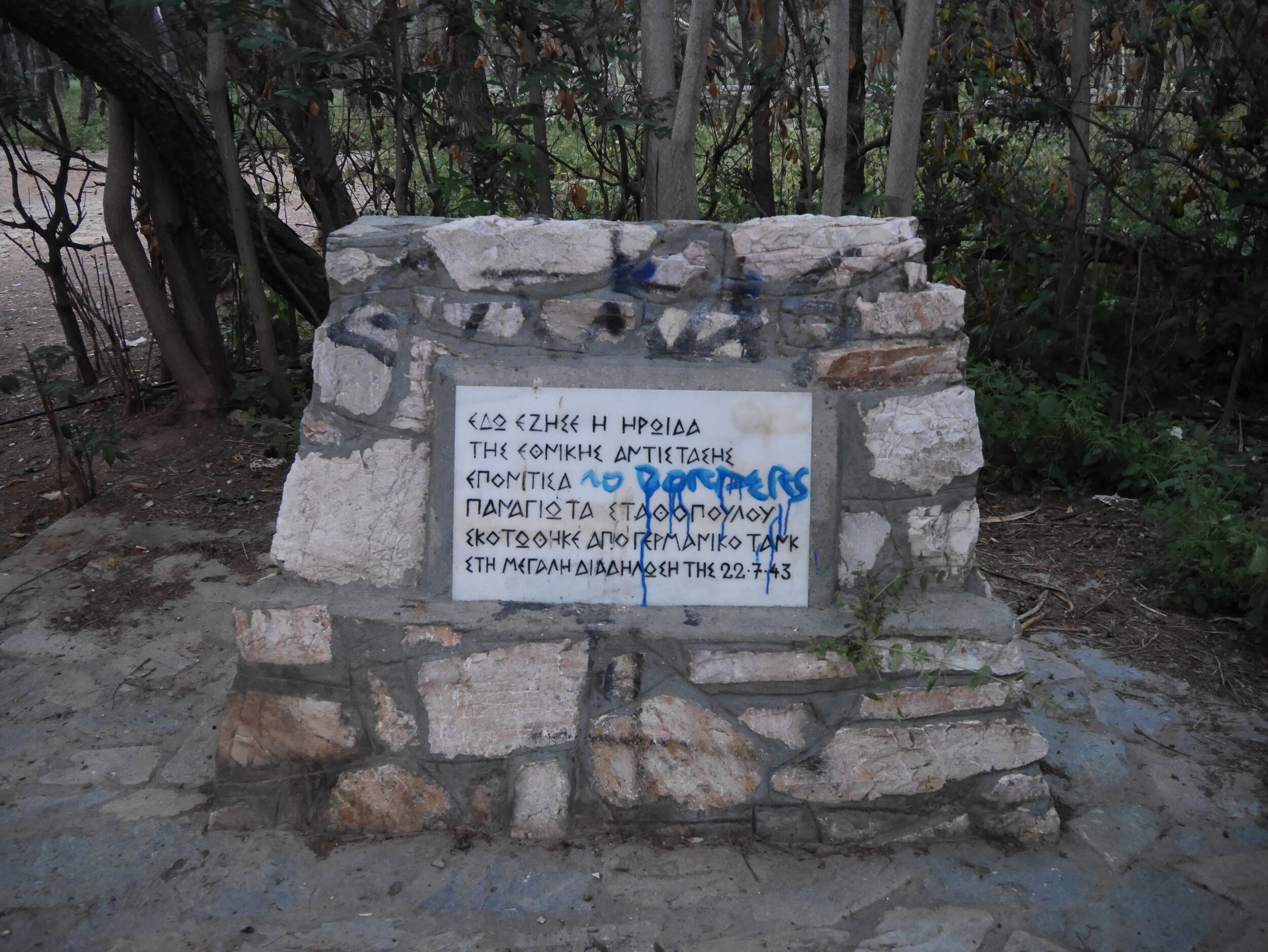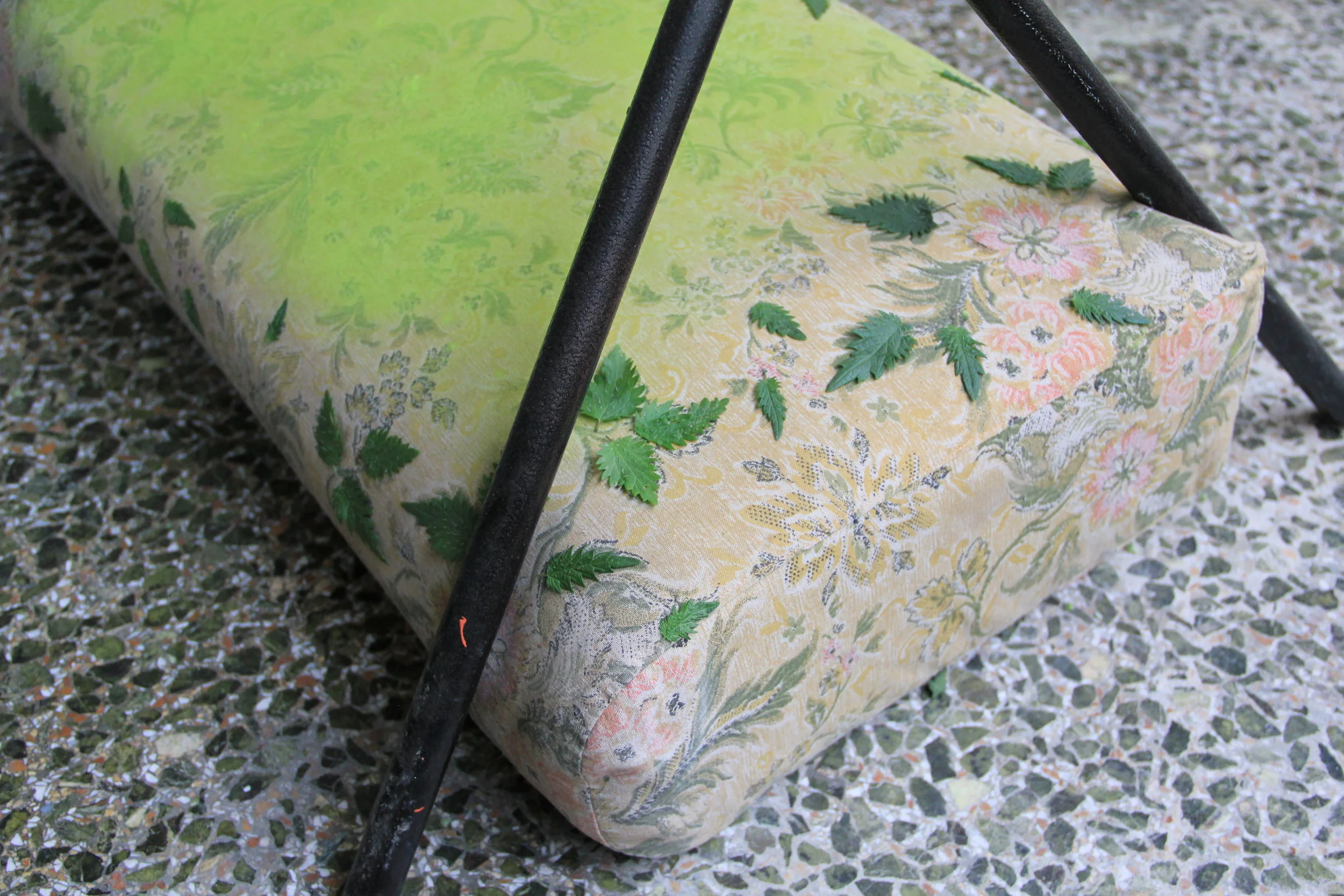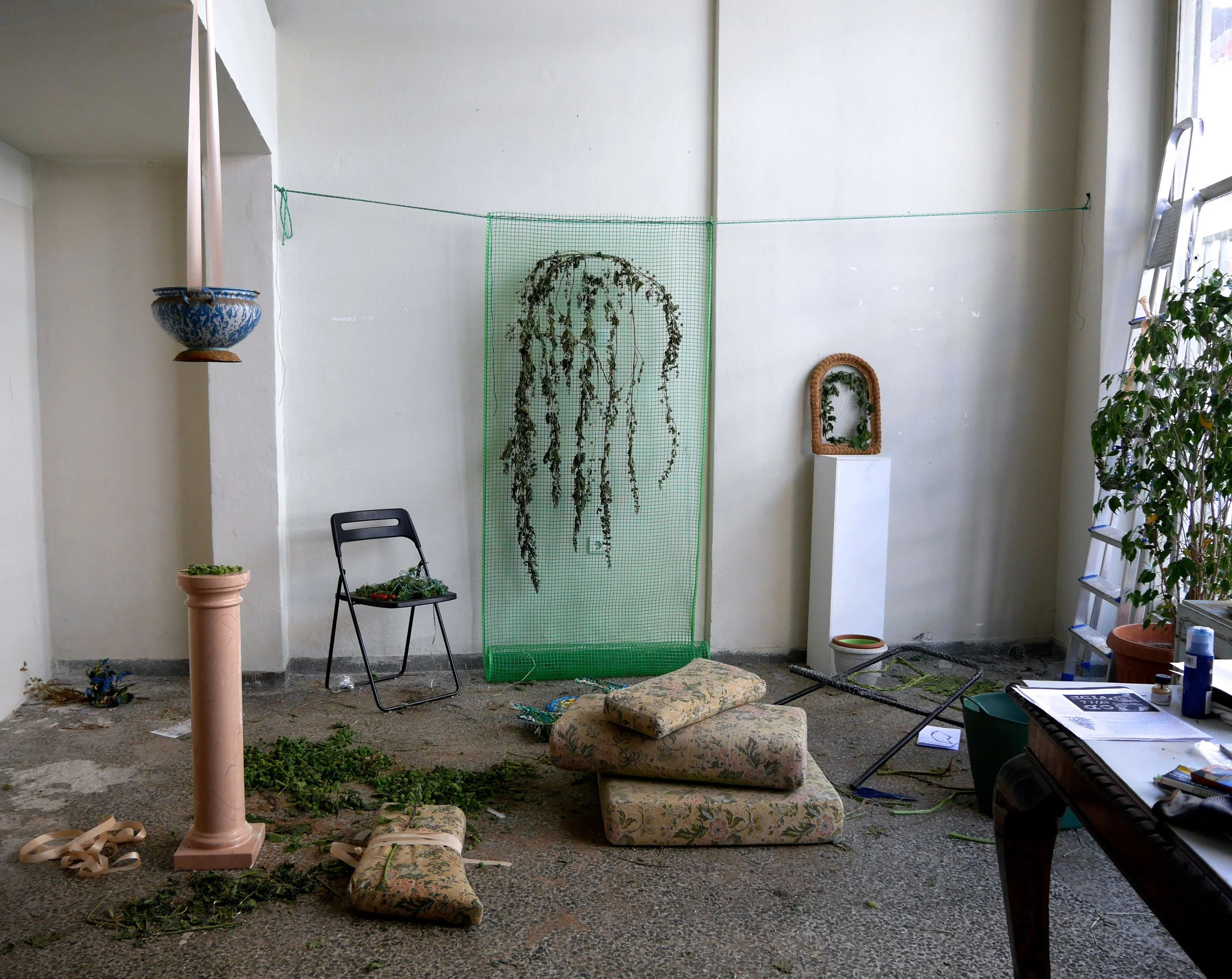Monument to Panagiota Stathopoulou in Pedion Tou Areos park, Athens
Detail: Weaving of roman nettles, industrial cordage and ruban on metal fencing
Detail: Leaves of roman nettles on manufactured cushion, spray paint, barbecue metal structure
In 2017 and 2018, I conducted the research project ζιζάνια - Mauvaises Herbes in Athens, Greece. Focusing on hidden local stories, public green spaces, plants, their history and symbolic associations, the work took the shape of field work, archival research, installations, workshops and conference.
Leaves for Tears, the first chapter of my investigations, focused in 2017 on Pedion Tou Areos, one of the largest public park in Athens, designed to honour the heroes of the 1831 Greek revolution. Far from the celebrated masculine torsos, in a derelict part taken over by wild plants, a small and hidden monument honors Panagiota Stathopoulou, a forgotten local heroine who was the first victim of the Athens Protest. The monument is tagged with current concerns of migration, collapsing timelines and politics. Leaves for Tears, text and installation, Y Residency, 2017, Athens
The first evening, we walked next to the park. They told me not to go in at night. So I went the next day. The entrance was taken over by a colony of pigeons. I walked through the park. It felt like an interstitial space, a mixture of domestication and wilderness. Narrow stony paths were borded by huge batches of nettle. A variety I had not seen before, with small green balls and a bite that keeps on kicking for a while. Nettle is a sort of in-between plant. Undesirable but medicinal. I thought it would be a good place to start.
On my second visit, I stopped at the entrance to pay attention to an engraved marble. I overlooked it the first time because I got confused by the Greek alphabet and the strange feeling of having lost the ability to read. The marble was inlaid into a low-rise monument made of cemented rocks. The only thing I could read was a date: 22.07.1943. It probably was a commemoration monument. I took a picture of it and asked Greek friends to translate the text for me. It was dedicated to Panagiota Stathopoulou. She was the first victim of the Athens Protest and had lived on Valtinon street. I looked for further information online but couldn’t find much about her. After the liberation, the street had been renamed in her honor. But somehow the original name quickly returned. Later on, the mayor installed this small commemorative monument at the entrance of the park, in front of the block of flats she lived in. There is a blue tag on the engraving. It says “no borders”. Strange to think that past and present politics collide on this overlooked plate dedicated to a forgotten local heroine.
The third time I went to the park, I was thinking of Panagiota and highly conscious of this added layer of history that had been apposed to my initial reading of the space. I wondered what the park looked like in her time. Today, it seems to be a park where people walk their dogs. The other day, Maria came across a pile of eighties gay porn magazines that seemed to have been chucked there. While walking amongst the wild plants, I thought that in a way, the story of the fallen heroine may be just as overpassed as the so called invasive plants around me. The idea of making an herbarium for her crossed my mind. Dry plants for sorrow. Dry plants for remembrance. Not quite like the art of Victorian Forget-Me-Nots but with the same ritualist approach. Objects as myth making spaces.
I kept going back and getting bitten by the roman nettles. That was a plant that was constantly reminding itself to me. It was neither passive nor inoffensive. It almost had a voice, marking my skin with its shrieks. With Andersen’s tale The Wild Swans on my mind, I went to buy some garden gloves. While I was picking nettles, people walking their dogs started to ask me what I was doing. I wasn’t quite sure how to explain what I wanted to make so I told them that I was going to make a soup. They seemed satisfied with this answer. Actually, nettle is quite nice when cooked. It relieves pain and reduces inflammation. Which makes it such a great metaphor. Here is a plant that can heal us but which also reminds us, as soon as we approach it, that nature should not be disposed of so easily.
Anything made with nettle could be a tribute to our blind spots.







